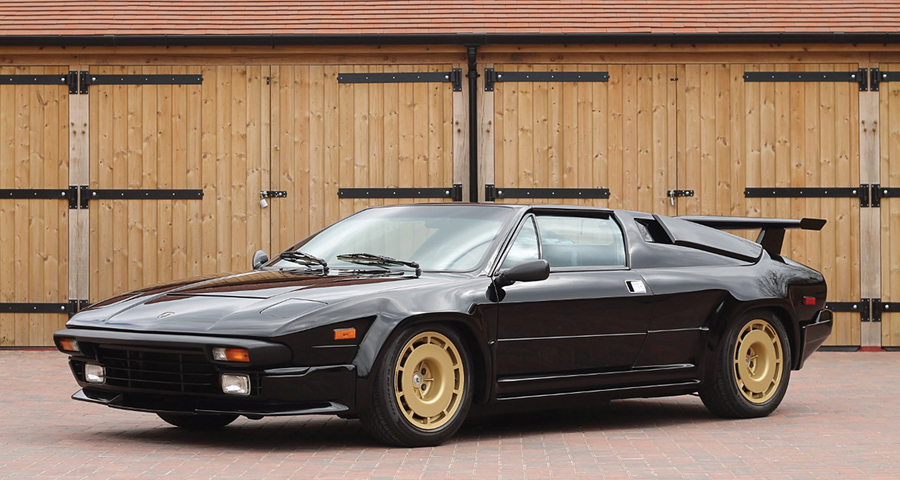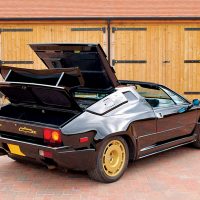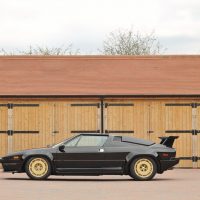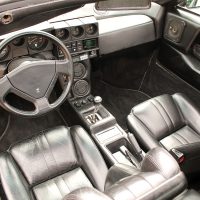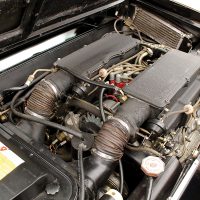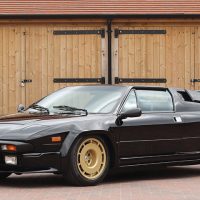SCM Analysis
Detailing
| Vehicle: | 1988 Lamborghini Jalpa 3.5 Targa |
| Years Produced: | 1982–88 |
| Number Produced: | 410 |
| Original List Price: | $58,000 |
| SCM Valuation: | Median to date, $88,000; high sale, $110,539 |
| Chassis Number Location: | Plate riveted on door jamb; Top of rear suspension turret |
| Engine Number Location: | On the block near the dipstick |
| Club Info: | Lamborghini Club America |
| Website: | http://www.lamborghiniclubamerica.com |
| Alternatives: | 1986–88 Ferrari 328 GTB, 1972–76 Maserati Merak, 1981–87 Lotus Esprit Series 3 |
| Investment Grade: | D |
This car, Lot 316, sold for $85,226 (£58,500) at the Silverstone Auctions Northamptonshire, U.K., sale on May 20, 2016.
Here’s a tale of Brexit: On the day in May when this Jalpa sold, the exchange rate was £1=$1.45. As I write this in mid-July, £58,500 is $78,200, at $1.33= £1. For U.S. collectors, shopping in the U.K. has just become more attractive — at least 8% more so. The $7k saved would more than pay for ocean shipping from the U.K., duty and receiving costs.
Those are the factors that often determine where in the market a potential buyer shops.
I wrote in last month’s SCM about another Lamborghini, the 400GT 2+2 (September 2016, Etceterini Profile, p. 92). I won’t bother to repeat the notion of Lamborghinis being underappreciated and undervalued here. It’s instructive, however, to make yet another observation about the manner in which the market continues its move to more specificity in the value of particular models and individual examples.
We are in a moment that is the polar opposite of the “rising tide lifts all boats” market.
An alternative to ’80s Ferrari and Porsche
In last month’s story, I argued that the 350GT and 400GT and Islero are very much a reasonable alternative to their Ferrari contemporaries, Let’s look at how the Jalpa stacks up against not only the Ferrari 328 — but also the Porsche 911, which was also Lamborghini’s target for their V8 model.
The first challenge the Jalpa faces is that when new, it never established the awareness in the U.S. market that was intended. This is where the presence of Lamborghini in the U.S. market — or rather the lack thereof — played into the rarity and ultimately the visibility of this model.
The Urraco was Lamborghini’s first V8. It was a 2+2 developed to take the company into a larger market segment — then the home of the Ferrari 308 GT4, Maserati Indy, Merak and the Porsche. As did Ferrari, the Urraco’s successor — the Silhouette — dropped the back “seats” and became a strict two-seater. However, almost no one noticed, as Lamborghini was in such dire straits that only 55 Silhouettes were built.
The Jalpa had rather more success, even as the company struggled through reorganization. In seven years of production, 410 were turned out. Compare that to over 1,800 Meraks, 7,400 Ferrari 328s and 78,000 3.2 911s between 1984 and 1989.
A little-known, great-handling car
So it is small wonder that very few people are aware of the Jalpa — and even fewer have had experience behind the wheel or know someone who has. An indication of the continuing difficulties at the factory was that the U.S. emissions and safety certification for the Jalpa was done in California and not in Italy.
If you’ve never driven a Jalpa, it is very much a member of the Lamborghini family. The throttle and clutch are heavy — but beautifully linear. The sound of the engine is subtle, but deep and sonorous. It handles wonderfully, but like all mid-engine cars, it requires care at the extremes of its potential performance.
Build quality, as can be imagined in this age of Italian labor strife, can be variable. Inevitably, examples that have been restored have been finished to a higher standard than it left Sant’Agata Bolognese.
The subject vehicle was stated to have been an original car with only a repaint, so it’s likely to have retained its original build quality. But as the former owner of an Islero, a vehicle largely painted as having been casually assembled, such tales are relative.
A car on the rise
Interestingly, in this market, increases in value in the past five years have been strong for the Lamborghini. It used to be easy to find a good — not great — Jalpa for about $40,000. Now, $75,000 is not unreasonable for that same example, which is an 87.4% increase.
In that same period, an ’88 Porsche 911 Targa has gone up about 65%, from $30k to $50k, the Merak has doubled in value to $80k, and the Ferrari moved from around $30k to $95k, up 171%.
This car, whether purchased at a Brexit discount in the U.K. by an American buyer or not, was well bought in the current Jalpa market range. For those who are considering a Ferrari 328, Maserati Merak or Porsche 911, a Jalpa offers a different choice, one that could be very satisfying and out of the ordinary.
For the confident and iconoclastic collector, a Jalpa might just be the 1980s’ most usable sports car. This example, as described, seems to have been well bought and should prove an enjoyable motoring companion for its new owner. ♦
(Introductory description courtesy of Silverstone Auctions.)
